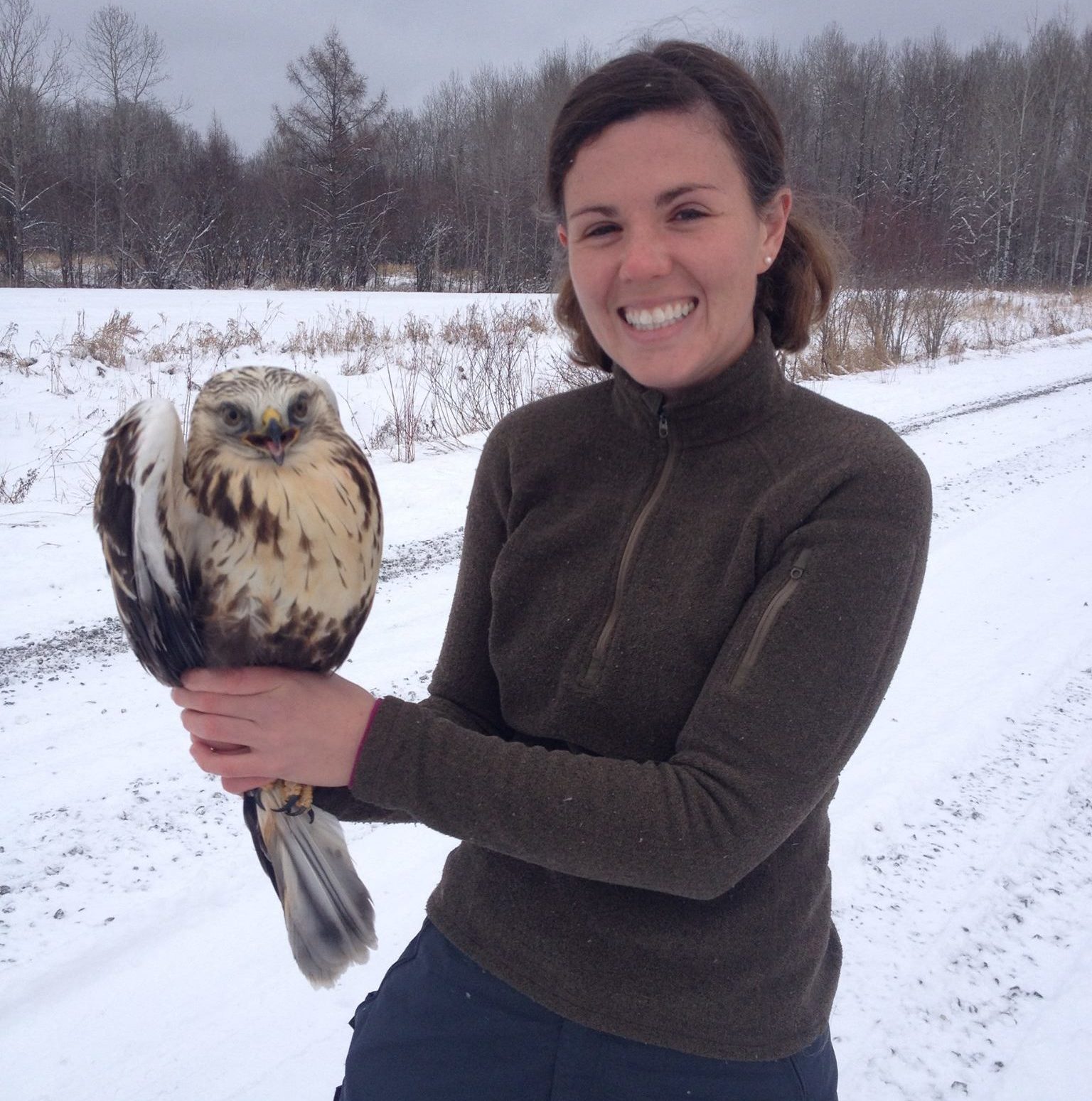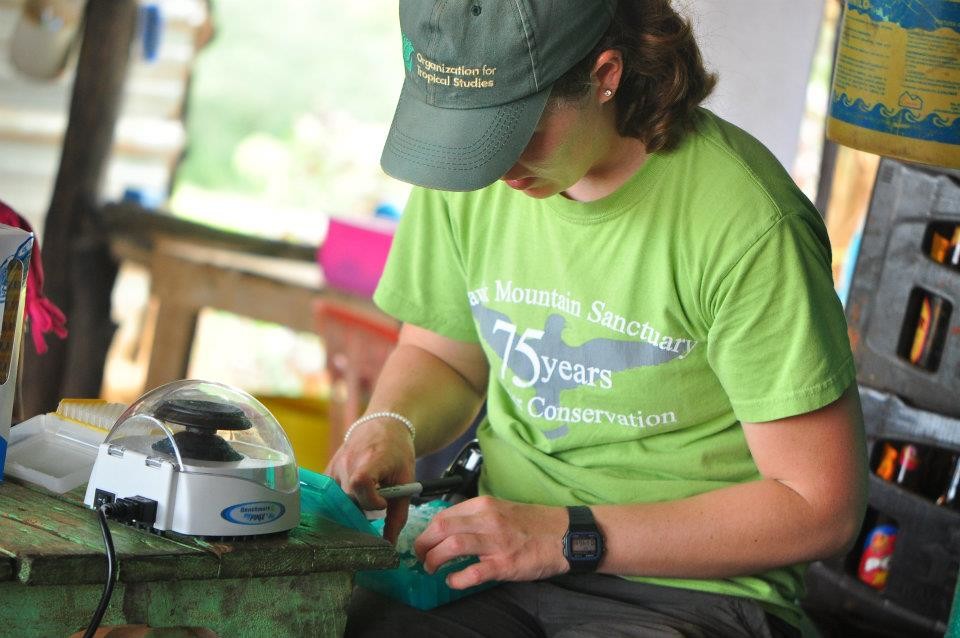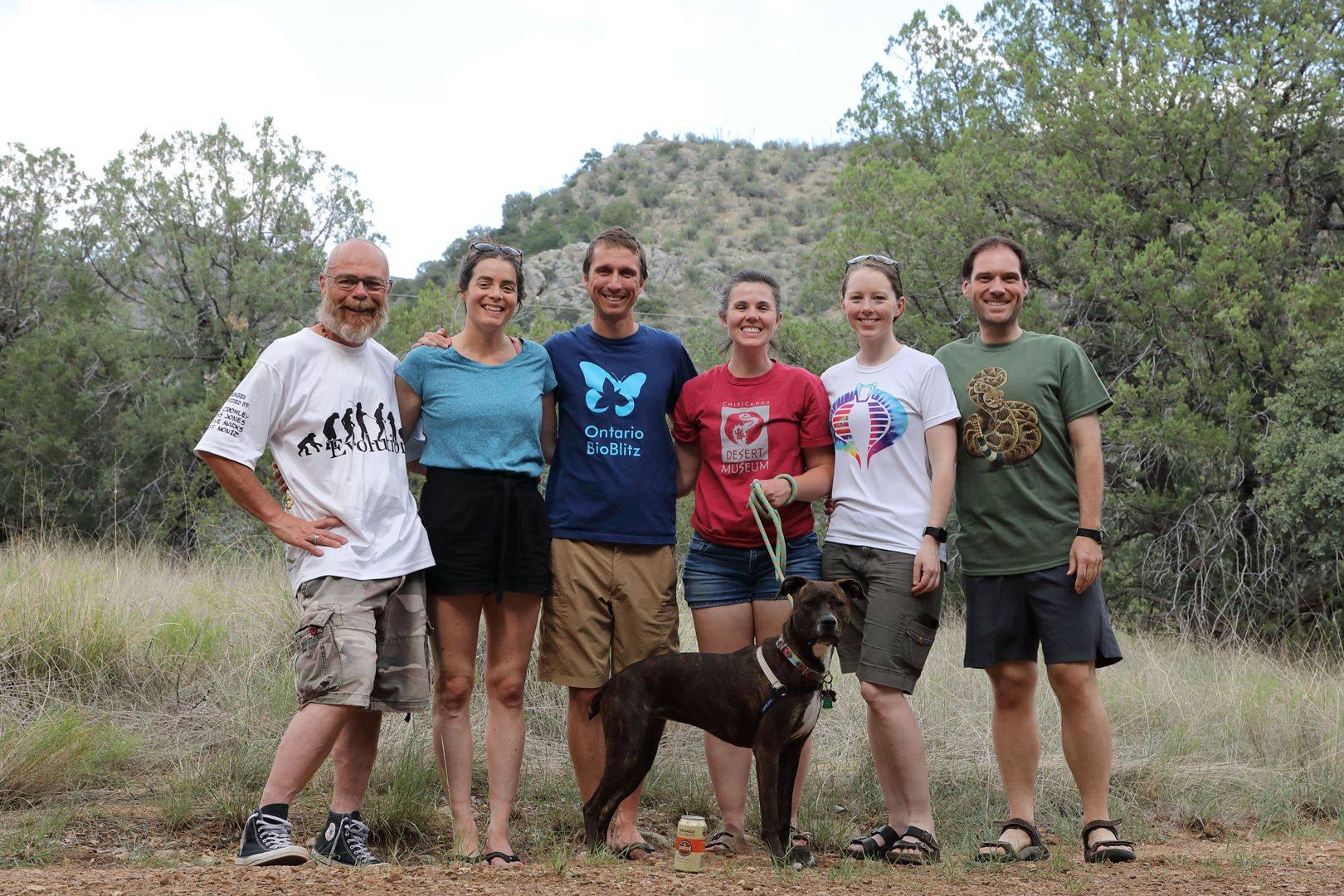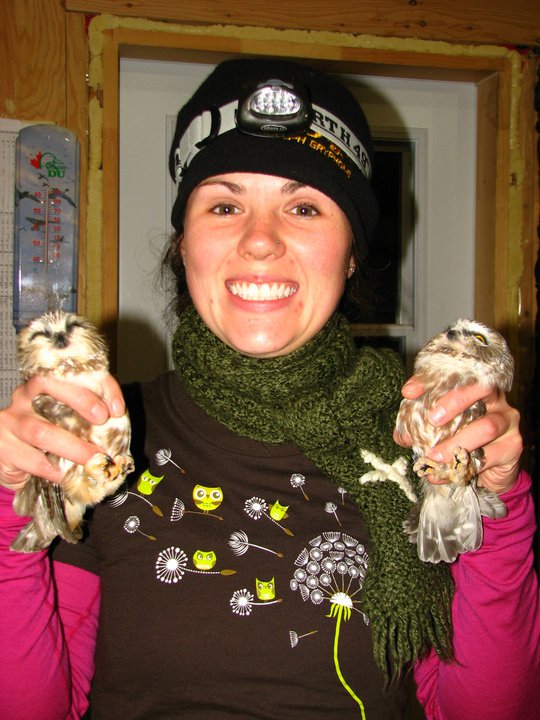
I grew up in the far north of Ontario, Canada and first became interested in ornithology by banding raptors with a master bander in my home town. This is me holding a Rough-legged Hawk (Buteo lagopus) that I banded with my master bander Mr. Bruce Murphy near my hometown during their irruption in 2015. #interestingmigrations


I studied physiology and morphology of migratory compared to sedentary Kingbirds (genus Tyrannus) for my dissertation. Here I am centrifuging bird blood at a field site in Colombia, South America (2012; top), and measuring morphology of museum specimens at the Royal Ontario Museum (2015; bottom).

Most of my Ph.D. field research was conducted at a field site in Guyana, South America. Here I am sharing my binoculars with a local Amerindian boy as we watched large Fork-tailed Flycatcher (Tyrannus savana) flocks flying in to nocturnal roosts at dusk.
Who is this Cannuck? Hi! I'm a northerner from Ontario, Canada and I study the drivers of range dynamics in birds. I have worked mainly within the suboscine birds (i.e., passerines that are not song birds) to study the evolution of migration. However, my research projects have been nestled at home in Canada as well as abroad in the United States, Colombia, Venezuela, and Guyana. I have worked with Indigenous communities across northern South America to study migration in Fork-tailed Flycatchers (Tyrannus savana) during my Ph.D., and with land managers on private and public properties, state governments, and scientists at collaborating institutions throughout my postdoc career. I am now a research associate working in a 'cross-border' capacity integrating avian point count data from boreal and hemi-boreal forests in the United States and Canada to better understand how sustainable management practices could be affected by the impacts of climate change as measured through avian population estimates.
In general, I am interested in what limits species distributions. I have studied this in (1) birds using citizen science data and biologger data (MacPherson et al. 2018, The Auk), physiological data (MacPherson et al. 2021, The Wilson Journal of Ornithology), and morphological data in a comparative phylogenetic framework (MacPherson et al. 2022, Biological Journal of the Linnean Society) , (2) mammals using citizen science data and field observations (LaRose, MacPherson et al. 2022, The Journal of Wildlife Management), (3) habitat specialists (i.e., wetlands) using expert-derived knowledge of amphibians, birds and fish (MacPherson et al. 2018, Conservation Biology), and (4) expanding species using data on behavioral flexibility of captive wild birds (e.g., Seitz, McCune, MacPherson et al. 2021, PLoS ONE; Logan, McCune, MacPherson et al. 2022, Animal Behavior and Cognition), and acoustic analyses of bird vocalizations in the wild (Bowser and MacPherson, peer-reviewed preregistration). I am continuing my long term research studying the morphology of bird migration in a biogeographic context across the entire suboscine lineage (a group of over 3000 taxa with high levels of variation in migratory behavior) at Louisiana State University Museum of Natural Science through collaboration with Dr. Nicholas Mason.
Being from a rural area in northern Canada, I identify and connect well with collaborators and students that juggle unique responsibilities and conditions. I structure my collaborations on a foundation of group norms that promote equality among group members and foster an environment of inclusion (see here for a recent set of group norms I developed for a project with 10+ collaborators). I have developed a personal set of co-author guidelines to promote inclusion of representatives from Indigenous communities without whom much of my field research would not be possible. This began as an attempt to minimize exploitative research practices that are known to be problematic in tropical/southern hemisphere field research (conducted by temperate/northern hemisphere researchers), and instead contribute to the decolonization and deimperialization of academia. Rooted in my background as a northerner, I am committed to improving my understanding of the issues affecting Indigenous communities where I conduct research, and pursuing research opportunities that acknowledge, listen to, support, and include Indigenous voices.
Outside of my scholarly life, I enjoy quiet outdoor time birding and running. In the last 5 years, I've really gotten into long-distance running, and love the marathon distance although I have no interest in ultra marathons. I love the far north and canoeing in the kettle lakes of northern Ontario. I also love the desert and am very fond of hiking and camping in southeast Arizona. If I had more time, I'd probably spend it learning how to be a better nature photographer and do a better job editing the nicer photos that I am already able to capture. I also love to garden, and am constantly plotting how I might have a garden like Barbara Kingsolver in "Animal, Vegetable, Miracle" at some point in the future. I stay sane thanks to a furry, four-legged adopted mutt named Lucy who gets me outside on at least 2 long walks a day which is a truly cherished time of stepping away from the computer and letting my subconscious do some work. 🙂
Here are some casual photos from things that bring me joy.

SEAZ herping trip with friends (2019).

Banding saw-whet owls at my 'home' banding station as the clock struck 'my birthday!' ca. 2014 (see tired eyes). This is how I first got into birds when I as a high school student. 🙂
